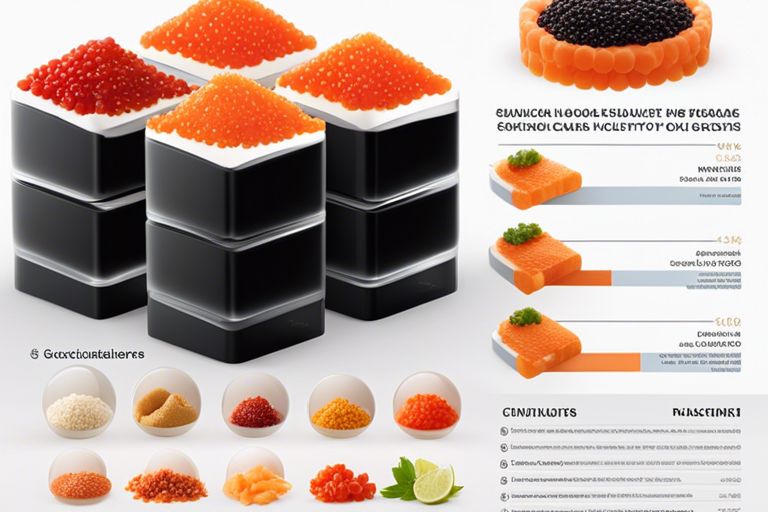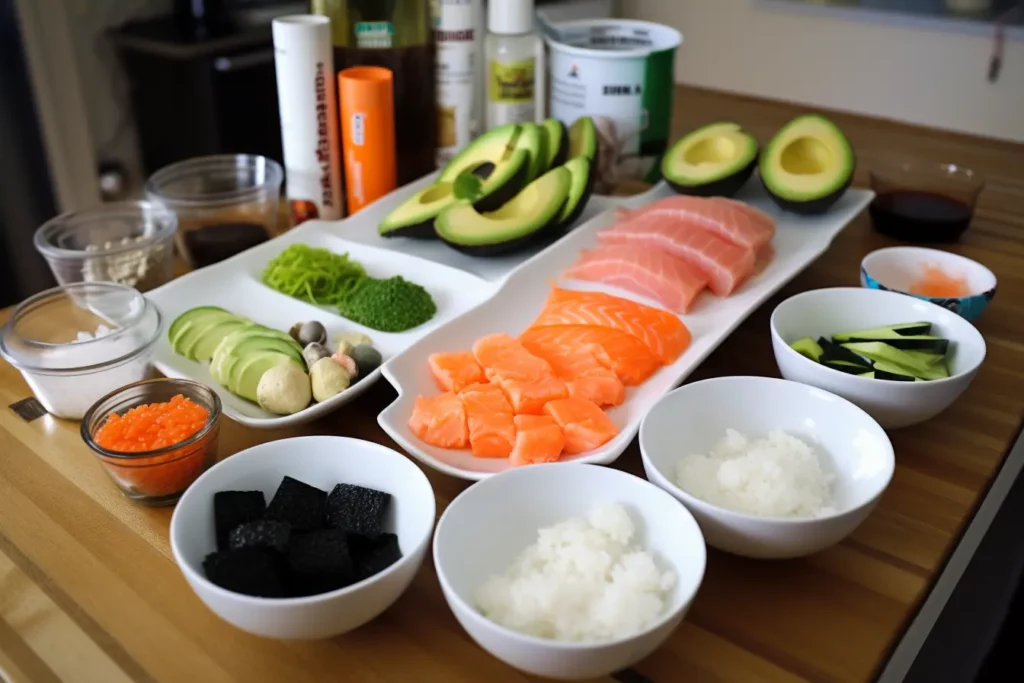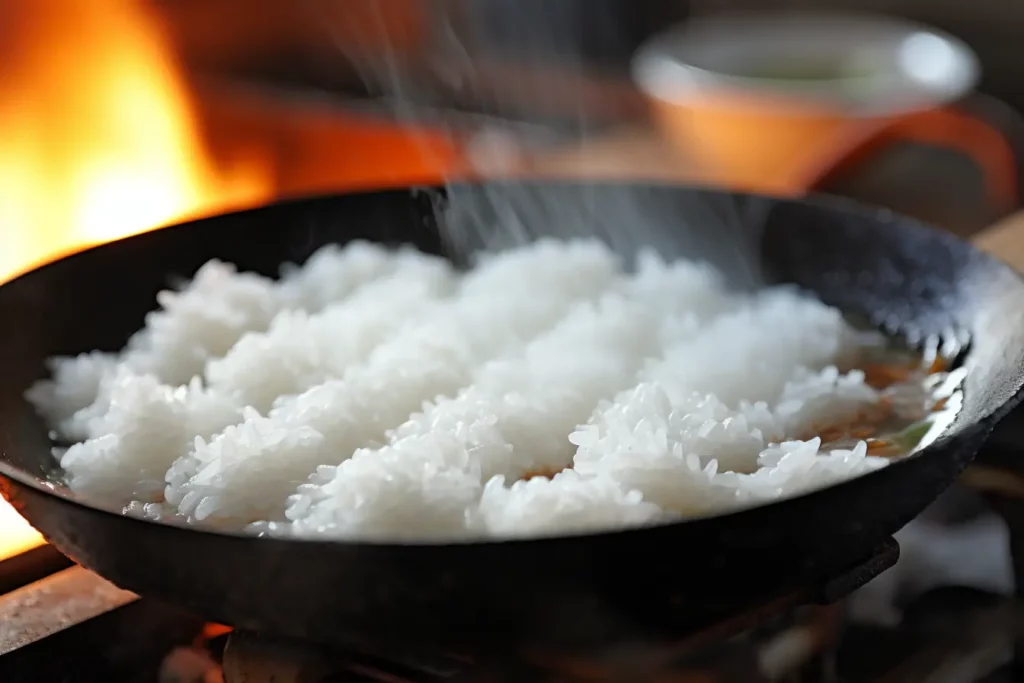Introduction
In today’s blog post, I would like to take a closer look at the differences between real and artificial caviar, especially masago and tobiko. Caviar is a delicate and luxurious ingredient that receives a lot of attention in the culinary world. However, many people do not know that there are different types of caviar and that not all of them are actually made from sturgeon roe.
Caviar in the spotlight
Caviar has long been a symbol of luxury and sophistication. It is served in fine dining and at exclusive events and attracts attention. But also in pop culture and in the art world, caviar is often presented as a status symbol. Films, music videos and paintings depict caviar as a sign of prosperity and elegance.
Overview of Real and Artificial Caviar
Real caviar comes from the sturgeon, a fish native to certain regions of the world. The process of making real caviar is elaborate and requires both expertise and patience. Artificial caviar, such as masago and tobiko, on the other hand, is often made from other types of fish and given dyes or flavors to mimic the look and taste of real caviar. The differences between these two types of caviar are many and it is worth taking a closer look at them.
If we delve deeper into real and artificial caviar, we will find that in addition to the pure production process, there are also differences in taste, texture and nutritional content. These differences can affect the quality and enjoyment of the caviar and are therefore important for all caviar lovers.
Real caviar
Real caviar is considered an exclusive delicacy and is obtained from the eggs of sturgeon fish. It is characterized by its unique taste and delicate consistency. Traditionally, real caviar comes from Russia, Iran and Azerbaijan, but nowadays it is also produced in other countries.
Origin and extraction
The origin of real caviar dates back to the 12th century, when it was already appreciated at the court of the Russian tsars. Nowadays, most sturgeons for real caviar come from aquacultures, where the fish are kept under controlled conditions. The eggs are obtained by carefully stripping the eggs from the female sturgeons and then carefully cleaning and salting them.
Characteristics and variations
Real caviar is characterized by its pearly, shiny eggs, which come in different shades such as black, gray, brown and even gold. Depending on the type of sturgeon and its origin, the taste and size of the caviar grains vary, resulting in different varieties with individual characteristic characteristics. Among the most well-known varieties are Beluga, Osietra and Sevruga.
Real caviar is a popular ingredient in fine dining due to its high quality and exquisite taste, ideal for special occasions.
Artificial caviar: masago and tobiko
When it comes to artificial caviar, we often come across the terms masago and tobiko. But what’s the difference between these two? If you want to learn more about Japanese fish eggs, check out this article on Japanese fish eggs: Masago vs Tobiko vs Ikura .
Masago: The small grain in detail
Masago are small, orange fish eggs that are often used to garnish sushi and other Japanese dishes. They have a mild flavor and crunchy texture that adds an interesting touch to any dish.
Masago is often mixed with wasabi for a spicy and delicious taste. It’s also rich in protein and omega-3 fatty acids, making it a healthy choice.
Tobiko: Colorful Crunch Experience
Tobiko are small fish eggs that come in different colors such as orange, yellow, green, and black. They are larger than masago and have a crunchy texture that offers a unique experience when eaten.
Thanks to their vibrant colors, tobiko are great for decorating dishes and make for a visually appealing presentation. Their delicate flavor and crunchy texture make them a popular ingredient in Japanese cuisine.
Tobiko is a delicious and colorful addition to sushi, salads, and other Japanese dishes. Their different colors add an interesting touch to any dish, making them a fun choice for caviar lovers.
Comparison and Comparison
When comparing real and artificial caviar, especially masago and tobiko, there are some important differences to keep in mind. Both the taste and texture, as well as the benefits and popularity, play a role in deciding which caviar is best for certain dishes and occasions. In addition, price and availability are also important factors to consider.
Taste and texture
The taste of real caviar is often stronger and saltier, while artificial caviar, such as masago and tobiko, may have a milder taste. The texture also differs, as real caviar is firmer and crispier, while artificial caviar can be more tender and less crunchy. Both types have their own merits and are suitable for different taste preferences and preparation methods.
Benefits and popularity
Both real and artificial caviar are used in a variety of ways in the kitchen. Real caviar is often enjoyed as a luxurious delicacy, while artificial caviar, such as masago and tobiko, is popular in sushi and other dishes due to its diverse colors and flavors. Popularity differs depending on cultural background and personal preferences, but both types of caviar have their place in the culinary world.
More information on the various benefits and popularity of real and artificial caviar is explained in more detail in the following sections to provide a comprehensive insight into the versatility of these popular ingredients.
Price and Availability
Real caviar is often more expensive and may be harder to come by, as it is more complex to produce and is often imported from distant regions. Artificial caviar, such as masago and tobiko, is usually less expensive and more readily available because it can be produced in larger quantities. This makes it an attractive alternative and allows chefs and consumers to enjoy a variety of dishes with caviar without having to spend a fortune.
However, there are also differences in quality and regional availability that should be taken into account when buying real and artificial caviar to ensure that the desired ingredients meet expectations.
Conclusions and Final Thoughts
Comparing real and artificial caviar, we have come to the conclusion that both have their merits. Real caviar has a unique taste and texture, while artificial caviar is a more sustainable and cheaper alternative. Ultimately, the choice between real and artificial caviar comes down to personal preference and budget. Regardless of the choice, however, we should always make sure to use the resources of the oceans responsibly and keep sustainability in mind. We hope this blog post has helped you better understand the differences between real and artificial caviar and make informed purchasing decisions.
FAQ
Q: What are the differences between real and artificial caviar (masago, tobiko)?
A: Real caviar is made from sturgeon or salmon, while artificial caviar is made from fish roe, such as masago or tobiko. Real caviar is more expensive and has a more intense flavor, while artificial caviar offers a variety of colors and flavors.
Q: Is real caviar healthier than artificial caviar?
A: Real caviar is rich in omega-3 fatty acids and other nutrients, while artificial caviar often contains artificial colors and preservatives. Therefore, real caviar is generally considered healthier.
Q: Is it possible to use real and artificial caviar at the same time?
A: Yes, both real and artificial caviar can be used on sushi, crackers, bagels, and other foods. The difference is in the taste and texture.
Q: What colors and flavors are available in artificial caviar?
A: Artificial caviar is available in a variety of colors such as orange, yellow, green, and black. The flavors range from mild to spicy and can include natural or artificial flavors.
Q: Why is real caviar more expensive than artificial caviar?
A: Real caviar is made from the eggs of sturgeon and salmon, which are rare and difficult to grow. The elaborate extraction and processing makes real caviar more expensive than artificial caviar, which is made from fish roe.


